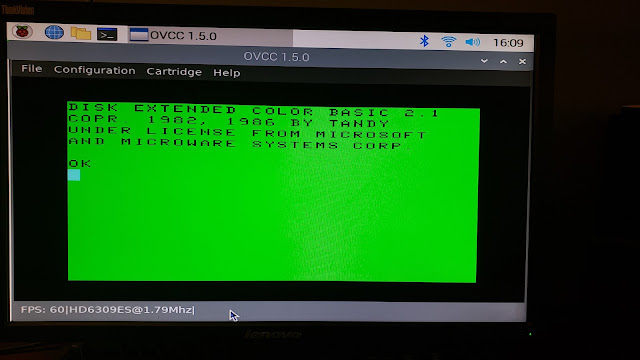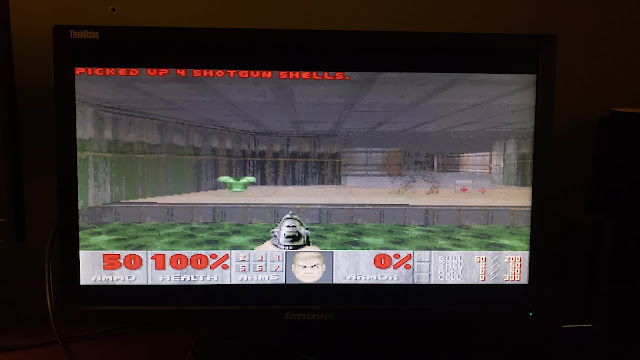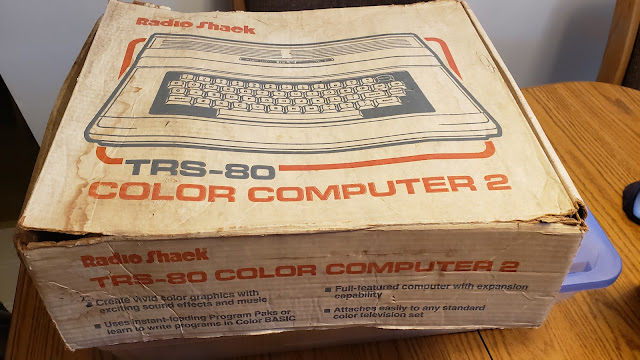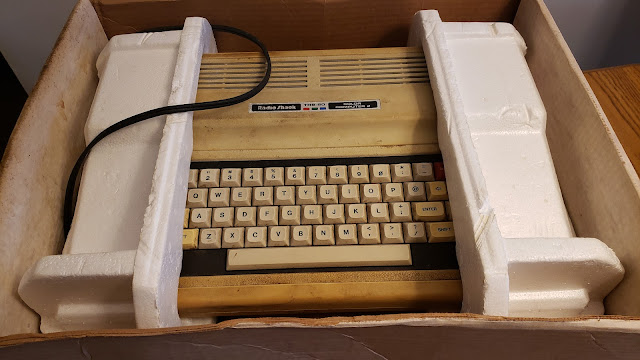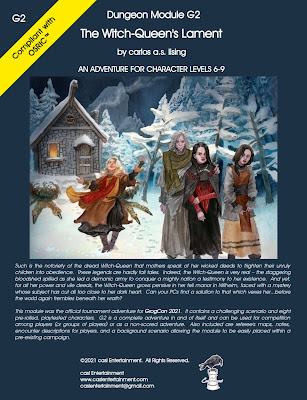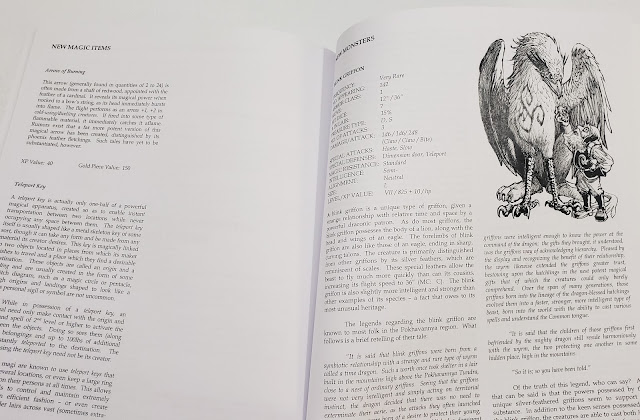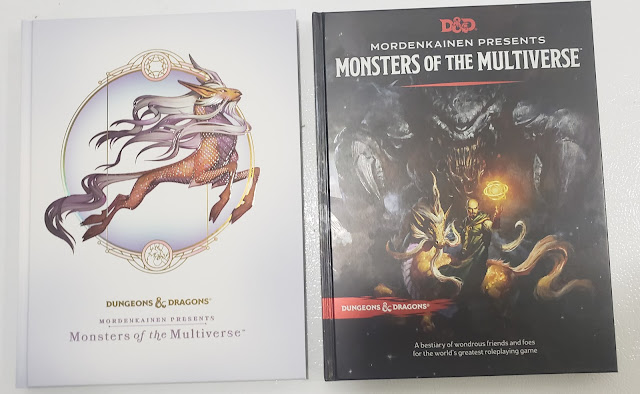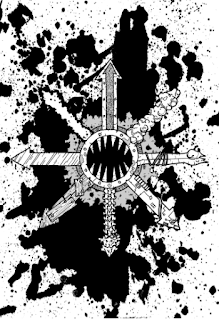
As a darkness falls over a Europe under the heel of the Nazi jackboot, a secret war has begun against the invader, one which at the direction of Winston Churchill, Prime Minster of Great Britain, would “…[S]et Europe ablaze.” This would be led by the Special Operations Executive or SOE, whose operatives, often working with local resistance forces, would carry out acts of sabotage against the Axis war effort, as well as work to establish secret armies which ultimately act in conjunction with Allied invading forces. However, there is a darker, more secret war, this against those Nazi agents and organisations which would command and entreat with the occult and forces beyond the understanding of mankind. Yet even this dark drive is riven by differing ideologies and approaches pandering to Hitler’s whims. The Black Sun consists of Nazi warrior-sorcerers supreme who use foul magic and summoned creatures from nameless dimensions to dominate the battlefields of men, whilst Nachtwölfe, the Night Wolves utilise technology, biological enhancements, and wunderwaffen (wonder weapons) to win the war for Germany. Ultimately, both utilise and fall under the malign influence of the Mythos… Standing against them, ready to thwart their malign efforts are the audacious Allied agents of Britain’s Section M, the United States’ Majestic, and the brave Resistance, willing to risk their lives and their sanity against malicious Nazi villains and the unfathomable gods and monsters of the Mythos themselves, each striving for supremacy in mankind’s darkest yet finest hour!
This is the set-up for
Achtung! Cthulhu, the roleplaying game of fast-paced pulp action and Mythos magic published by Modiphius Entertainment. Originally published using
Call of Cthulhu, Sixth Edition and
Savage Worlds in 2013, and later
FATE Core, almost a decade on, it returns in brand new edition. Not though written for use with
Call of Cthulhu, Seventh Edition, but rather for use with the publisher’s
2d20 System house mechanics, first seen in
Mutant Chronicles and
Robert E. Howard’s Conan: Adventures in an Age Undreamed Of. The result is a roleplaying game of Lovecraftian investigative action in which the Player Characters can take the fight to the enemy, punch out the Nazis, and wield powerful sorcery or psychic powers against their agents and their Mythos allies, against the backdrop of World War II and the Nazi war machine.
The
Achtung! Cthulhu 2d20: Player’s Guide—heralded as ‘Issue No. 1’ in a series on the cover—starts with a basic introduction to the roleplaying game and its setting, the latter underpinned by a handful of in-game rumours and eyewitness accounts that just hint at some of the horrors to come. It sets the scene before the
Achtung! Cthulhu 2d20: Player’s Guide dives into the details of the
2d20 System and
Achtung! Cthulhu. Whenever a player wants his Agent to overcome a Test, he rolls two twenty-sided dice, aiming to roll under a target number. The target number is the value of an Attribute plus a Skill, with Difficulty of a task—ranging from zero to five, from researching the latest news in a newspaper morgue to maintaining your composure when confronted by dread Cthulhu on the once sunken island of R’lyeh—determines the number of successes necessary. Rolls under the target number generate successes. Rolls of one or if the Agent has a Focus in the skill, for example, Fighting (Threat Awareness) or Stealth (Rural Stealth), and rolls equal to or under the value of the skill, all count as Critical successes and are worth two successes rather than one. Any successes generated beyond those needed to beat a Difficulty generate Momentum, but any roll of twenty generates a Complication.
Momentum is a group resource shared by all of the players. It can be spent before a roll is made to purchase extra twenty-sided dice—up to three dice can be purchased this way, but the cost goes up the more dice are purchased; to create a Truth about a situation—Truth can make a situation less complicated or more complicated; obtain information by asking the Game Master; or to reduce the time it takes to perform a test. The players are encouraged to use Momentum, a point being lost at the end of each scene. If there is no Momentum, it can be gained by granting the Game master points of Threat, on a one-for-one basis. The Game master expends Threat to alter scenes, empower her NPCs, and add Complications. Threat can also be generated by a player buying off a Complication or even gaining access to exotic or deadly equipment or knowledge.
In addition all Agents possess Fortune Points. These can be spent to automatically gain a Critical Success, reroll the dice, take an additional major action in combat, to avoid defeat, or to make it happen and immediately add a new Truth to a situation. Fortune Points are regained at the start of each adventure, but can also be gained by voluntarily failing a Skill Test or invoking a scar and having an Agent’s past trauma or an injury inhibit his action.
For example, a team of agents is searching Colonel Köhler’s office for documents to photograph. Whilst another agent sneaks in, Eddie Chapman, posing as a German officer, will distract his secretary. The Game Master sets the Difficulty at two, as she is busy and wants to leave for lunch. Eddie combines his Insight Attribute of 11 with his Persuasion skill of 4. Eddie also has the Charm Focus. So Eddie’s player is rolling under a target number of 15 and any roll under the Charm skill’s value will generate Critical successes. Eddie’s player uses a point of Momentum to purchase a third twenty-sided die, so his player has three to roll rather than two. He rolls fourteen, five, and four. This generates a total of five successes—two each for the four and five as Critical successes, and one for the fourteen. Eddie succeeds in distracting the secretary and generates three Momentum. His player adds one to the Momentum pool, but spends two to add a Truth to the game, which is that the secretary is enamoured of Eddie and will accept his dinner invitation.The
Achtung! Cthulhu 2d20: Player’s Guide goes into some detail for its combat mechanics. It uses the same core mechanics, but adds further uses for Momentum. This starts with the Keep Initiative option. In combat, the Game Master chooses who acts first, typically a Player Character. Then turn proceeds back and forth in turn between the Player Character Agents and the Game Master’s NPCs, but Momentum can be spent to enable an Agent to act straight after another Agent rather than an NPC. In a turn, a character can take a Minor Action—Aim, Draw Item, Movement, or Prepare, and a Major Action—Assist, Attack, Cast a Spell, Catch Breath, Create Truth, Pass, Ready, Rush, Stabilise, or make a Skill Test. Of these, Aim grants an extra twenty-sided die to an attack; Prepare readies a Major Action, typically Cast a Spell; Catch Breath can remove stress or a damage condition; Create Truth adds, alters, or removes a Truth in a situation; and Stabilise is an attempt to give medical attention to someone who is dying.
Skill Tests in combat are made using the appropriate Attribute and Skill, with Melee attacks being opposed rolls and Ranged attacks not. Damage rolls are made with Challenge Dice. Extra Challenge Dice can be added to an attack for high Attributes—a high Brawn for melee attacks and a high Insight for ranged attacks. Each Challenge Die is marked with a ‘1’, ‘2’, two faces left blank, and two marked with the ‘Achtung! Cthulhu’ symbol, which is equal to ‘1 plus effect’. The Effect results on the Challenge Dice come into play with weapon effects. These can be ‘Area’, ‘Piercing X’, ‘Stun’, ‘Vicious’, and so on. For example, a Bat has a ‘Stun’ Condition, firearms have the ‘Vicious’ Condition, and a Lifebuoy Portable Flamethrower, No. 2 Mk. II has the ‘Persistent’ Condition.
The numbers are added up and that indicates the amount of Stress inflicted on the opponent. Resistance will reduce the amount of Stress inflicted, from Armour and Cover for physical Stress, and Courage and Morale for mental Stress. Stress can be mental or physical, so physical might be from getting shot or punched, but mental might be from a spell or having a knife held to the throat! An Agent only has the one Stress track for handling both, and if an Agent suffers five Stress from a single attack or has his Stress track completely filled in, he suffers an Injury. Multiple types of Injury are listed, for example, Amputee or Lingering Shrapnel for a Physical Injury or Compulsive/Obsessive Rituals or Post-Traumatic Stress Disorder for a Mental Injury. An Injury serves as a Truth which will impede him under certain circumstances, whether mental or physical. If an Agent suffers three Injuries, he is defeated and if he suffers another, he is dead. An Injury, of either type can be healed, but that comes with the possibility of leaving a Scar, a permanent sign of the Injury. An Injury or a Scar can impede an Agent in play and earn him a Fortune Point if either of them causes the Agent to voluntarily fail.
An Agent in
Achtung! Cthulhu 2d20 is defined by his Attributes, Skills, associated Skill Focuses, Talents, Truths, Belongings, and Contacts. He has six Attributes—Agility, Brawn, Coordination, Insight, Reason, and Will—rated between eight and twelve, with eight being average, whilst his Skills are rated between one and five. To create an Agent, a player chooses an Archetype, for example, Boffin, Con Artist, or Occultist; Nationality; a Background such as Air Force, Labourer, or Spiritual Leader; and a distinct Characteristic, like Bookworm, Owned an Occult Artefact, or Young at Heart. At each stage, an Agent receives bonuses to his Attributes and Skills, as well as Skill Focuses, Talents, Truths, Belongings, and Contacts. The exception is Nationality, which provides a Nationality and Languages as Truths. The process consists of a player making choices at each stage, and the range of Archetype, Nationality, Background, and Characteristic options enable him to create a wide range of character types.
Eddie Chapman
Nationality: British
Archetype: Con Artist
Background: Criminal
Characteristic: Criminal Mindset
ATTRIBUTES
Agility 09 Brawn 07 Coordination 07 Insight 11 Reason 08 Will 09
STRESS TRACK – 10
RESISTANCE
Armour Resistance: 0
Courage Resistance: 1
BONUS DICE
Melee Attacks: 0
Ranged Attacks: +2
Magical/Mental Attacks: +1
SKILLS
Academia 1, Engineering 1, Observation 3 (Instincts), Persuasion 4 (Charm), Resilience 1 (Discipline), Stealth 4 (Urban Stealth), Tactics 1, Vehicles 1
TALENTS
A Way With Words, Subtle Cues, Perfect Timing
TRUTHS
English, Black Market Dealer, Criminal Mindset
LANGUAGES
English, German
BELONGINGS
Disguise Kit
Unlike other roleplaying games of Lovecraftian investigative horror, Player Characters—or Agents—can begin play knowing magic. This requires the Occultist Archetype and a Talent with the spellcaster keyword. Magic is either learnt through a Tradition—Runeweaving (draws on the power of Runes to channel the power of the Viking gods), Druidism (animistic and natural beliefs), or Psychic; Dabbling—typically by amateurs who initially learn flawed spells; or Research—through rigorous study. Spells include battlefield magic like
Spear of Lug or
Curse of Loki, and rituals such as
Commune with Deity or
Baldur’s Shield, which requires time and the caster to inflict Stress against the ritual’s Stress Track to successfully cast it. Psychic abilities include Combat Perception and Telepathy. A spellcaster has the base Power rating of one, indicating the number of Challenge Dice his player rolls to inflict Stress—both on the target or ritual, or the spellcaster himself as a consequence of casting the spell. Spell types include attack, banishment, blessing, control, curse, discharged, divination, manifestation, and summoning.
Spells can be miscast, indicated by a roll of a Complication on any die, the Complication widening the greater the Difficulty of casting the spell, and they can also be flawed, which means that the spell automatically generates a Complication, extra twenty-sided dice can only be bought using Threat, and there are no Momentum expenditures associated with that version of the spell. Spellcasters can also engage in magical duels. Overall, there are only a handful of spells for each Tradition, and only two Rituals. There are no Mythos spells, although Agents can learn them.
Henry Brinded
Nationality: American
Archetype: Occultist
Background: Academic
Characteristic: Veteran of the Great War
ATTRIBUTES
Agility 06 Brawn 08 Coordination 09 Insight 08 Reason 10 Will 10
STRESS TRACK – 12
RESISTANCE
Armour Resistance: 0
Courage Resistance: 2
BONUS DICE
Melee Attacks: 0
Ranged Attacks: 0
Magical/Mental Attacks: +2
BASE POWER: 2
SPELLS
Wisdom of Frigg,
Balm of BelenusSKILLS
Academia 4 (Linguistics, Occultism), Fighting 1, Observation 2, Persuasion 3 (Invocation), Resilience 2 (Discipline), Stealth 1, Survival 2
TALENTS
Occult Scholar, Library Dweller, Sharpshooter
TRUTHS
English, Professor of Classics
LANGUAGES
English, Latin
Beyond the rules, character creation, and magic, most of the
Achtung! Cthulhu 2d20: Player’s Guide is devoted to the arms, armour, equipment and forces of the Allied and Axis powers. This includes guns, tanks, and more, primarily for the American, British, and German forces. There are rules here too for vehicular combat. The coverage of the armed forces is broad, focusing mainly on the special forces and intelligence agencies, and on actual historical agencies rather than the ones operating in the world of
Achtung! Cthulhu. Stats are given for various Allied troop types and there is a discussion of the Home Front too.
So the question is, what is missing from the
Achtung! Cthulhu 2d20: Player’s Guide? Primarily the Mythos. This is understandable, given that actual knowledge should be for the Game Master to know and the players and their Agents to find out. However, what this also means is that there are no Mythos spells despite some Occultist Agents being allowed to learn them, and perhaps worse, no rules for handling Sanity when encountering the Mythos as per other roleplaying games of Lovecraftian investigative horror. Well, okay, perhaps the players and their Agents do not need to know how Sanity is lost—yet, but it is not difficult to surmise as a being a Skill Test using Will and Resilience against a Difficulty which will vary according to the unnatural nature of the Mythos entity encountered or spell cast, with failures leading to Challenge Dice rolls which inflict Stress and mental Injuries. Oddly, whilst there are stats for Allied forces, there are none for the enemy, despite there being stats for German vehicles and tanks.
Physically, the
Achtung! Cthulhu 2d20: Player’s Guide is well presented. It does need an edit in places, but it is well written, and there are some excellent examples of play which explain how the roleplaying game is intended to be played. However, the book’s full colour artwork is fantastic. Much of it has been seen in the previous iteration of
Achtung! Cthulhu, but the new artwork in the
Achtung! Cthulhu 2d20: Player’s Guide is really good, capturing the action, excitement, and horror of the war against the darkest forces of the Axis powers.
Achtung! Cthulhu 2d20 is not a roleplaying game of Lovecraftian investigative horror for the player who prefers the Purist style of play. It is too action orientated with guns aplenty and Agents who can cast magic, and thus too Pulpy in tone and style. In fact,
Achtung! Cthulhu 2d20 is not a roleplaying game of Lovecraftian investigative horror at all. Rather
Achtung! Cthulhu 2d20 is instead a roleplaying game of Lovecraftian action horror in which the Player Characters fight evil as well as confront the unknowable—and the Achtung! Cthulhu 2d20: Player’s Guide is a great start to the action and the horror.
 Name: Field of ScreamsPublisher: Chaosium, Inc.
Name: Field of ScreamsPublisher: Chaosium, Inc.


















